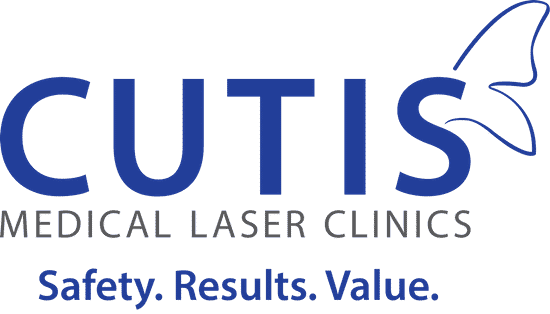Dermal fillers can do wonders in enhancing your natural beauty. While they are commonly known for plumping up the lips of many celebrities and internet personalities, they can do more than that. Fillers can restore volume in the face, improve folds and lines, correct hollowness in the face, and even improve facial contours. 
Fillers are a safe treatment, especially in the hands of the trained and experienced injector. This is why before booking or undergoing a procedure, it is best to be an informed patient. It makes sense to understand the different types of fillers, how to maintain the results, as well as the risks and side effects.
Continue reading as we list the top 10 questions and answers before getting dermal fillers.
1. Do I really need fillers or Botox?
Although both fillers and Botox can help reverse signs of aging, they are not the same. Neurotoxins like Botox work by smoothing out lines and wrinkles due to repetitive facial expressions. They temporarily relax the muscles that cause lines in the forehead, between the brows, and corner of the eyes (crow’s feet).
Fillers, on the other hand, restore volume loss or add volume to sagging skin. They work by filling in the lines and gaps due to folds, wrinkles, and creases. Fillers replenish the skin’s supply of a specific substance like hyaluronic acid to improve the appearance of wrinkles, plump up the lips, and improve facial features.
Both can be used together to get a rejuvenated and more youthful appearance. They can address different areas of the face, with Botox used in the upper area like around the eyes and forehead, and fillers on the middle and lower areas.
2. Is the injector certified or experienced?
When getting fillers or any other cosmetic injectables, always see a board-certified doctor, dermatologist, or cosmetic surgeon. This is to make sure that the one administering your treatment has gone through a rigorous medical education and training process in their chosen specialty.
Medically qualified injectors are also updated with the latest products and injection techniques. They avoid overfilling or using the wrong type of filler, so you can avoid looking unnatural or overdone. They will also offer subtle or natural-looking enhancements and minimize unwanted side effects.
Our very own Dr. Sylvia is a US Board certified physician. She has years of experience administering cosmetic injectables and prefers a natural look for her patients. She is also recognized for her evidence-based approach and attention to detail.
Read our previous posts for tips on getting natural-looking results when getting facial fillers.
3. How do I know which type of filler is right for me?
A consultation with a doctor will let you know what your options are and create the right treatment plan for you. US FDA-approved fillers are always recommended, as they are safe and made of substances that the body absorbs and metabolizes.
At Cutis, we have made fillers made with naturally occurring substances. We have hyaluronic acid (HA) fillers like Juvéderm, which come in varying consistencies. We also have calcium hydroxylapatite (CaHA) like Radiesse, which also helps stimulate collagen in the area.
Juvéderm can be used to:
- Volumize the lips
- Soften lines and wrinkles
- Reduce puffiness in the eyes
- Correct folds and creases
- Contour the face
Radiesse can be used to:
- Smooth moderate to severe folds and wrinkles
- Replenish lost volume
- Restore volume loss in the hands
- Contour the jawline or lower face
4. Is there downtime? How long is it?
Recovery time varies from patient to patient, the type of filler used, and the treated area. There is minimal to no downtime and most patients can go back to their normal routines after the treatment. It is, however, advisable to avoid strenuous or intense physical activities for 24 to 48 hours.
You may notice some bruising or swelling at the injection site, which resolves on its own within one to two weeks. The area may also feel a bit firm or different due to the presence of the fillers. It can take about two or three weeks for the dermal fillers to fully settle and completely blend with the surrounding tissues.
5. What are the side effects and risks?
Fillers (in the right hands) are safe with minimal side effects and a short recovery period. The most common side effects include redness, swelling, and bruising. As previously mentioned, they are temporary and subside after several days.
Bumps, bleeding at the injection, and infections are less common. Patients may experience rare side effects or complications if the fillers, for instance, are injected into the blood vessels. Seeing a trained and board-certified injector can help minimize these side effects.
6. What are your expectations? Are they realistic?
While fillers can do a lot of things for facial rejuvenation, you need to be realistic about your expectations. Do take note that filler treatments are not meant to change who you are; they are mostly used to enhance your natural beauty.
Fillers, furthermore, cannot address your every concern. If you have sagging or loose skin, for instance, your doctor may recommend non-invasive lifting and tightening treatments along with other injectables to get your desired outcome.
This is why it is best to let your injector know about your goals and what you want to achieve with fillers. Be open to their suggestions or other treatment recommendations. Be an informed patient and always keep your expectations in check.
7. How can I maintain the results?
Dermal fillers are not permanent. HA-based fillers last six to 12 months, while CaHA last 12 to 18 months or longer. When the effects wear off, the treated areas return to their original state. This is why if you want to maintain the results, you need to get touch-up treatments once or twice a year.
Discontinuing fillers will not make your face look more wrinkling or sagging. If you feel that way, it is probably due to the natural aging process; you continually lose collagen, volume, and elastin as you age. Cosmetic injectables cannot prevent this. Maintenance treatments and other non-surgical procedures are recommended to keep the results.
8. How should I prepare for the treatment?
Two weeks before your treatment, avoid taking blood-thinning medications or supplements. These include NSAIDs or non-steroidal anti-inflammatory drugs (aspirin or ibuprofen), fish oil, vitamin E, and anticoagulants.
Be sure to talk to your healthcare provider before discontinuing any prescribed or regular medication. Let your injector know about the medications and supplements you are taking.
Two days prior to your injections, avoid waxing, tweezing, or using depilatory cream on the treatment area. The same is also true for topical products such as glycolic acid, retinol, Retin-A, and retinoids. You can consider taking arnica supplements several days before the treatment to minimize your chances of bruising.
Further reading: 7 Ways to Reduce and Prevent Bruising from Botox and Fillers
9. What can I do if I am not happy or satisfied with the results?
If you don’t like the results, you can have the filler removed. This, however, only applies to hyaluronic acid-based fillers. The material can be dissolved by injecting an enzyme called hyaluronidase at the injection site. This breaks down the hyaluronic acid quickly, with the HA completely dissolved within 24 to 48 hours.
Hyaluronidase is also used to dissolve or correct excessive, uneven, and incorrect placement of fillers. Doctors also use it in an emergency situation where the filler has been accidentally injected into an artery.
10. Is my filler treatment/deal too cheap or too good to be true?
If you feel that way, it probably is. Discounted deals and too-good-to-be-true services are never a good idea, as fillers and cosmetic injectables are not cheap. They could be offering fake products or may not be qualified to administer the treatments. So, don’t base your decision on the (lowest) price tag.
Medical and cosmetic treatments are not something you should skimp on. Besides, reputable doctors and providers are not able to offer extremely cheap deals that are lower than the real price of the injectable. They will also never offer to do the injection outside a medical clinic or facility.
Want to get fillers for a more rejuvenated appearance? Be an informed patient! Contact Cutis Medical Laser Clinics in Singapore today and schedule a consultation with our aesthetic doctor to learn more about our injectables.
- If you would like to be an informed patient, please contact us at +65-6801-4000 or
cutis@cutislaserclinics.com. - Cutis Medical Laser Clinics, 9 Scotts Road Pacific Plaza, Scotts Medical Center #08-07, Singapore – 228210
+65-6801-4000 - cutis@cutislaserclinics.com
